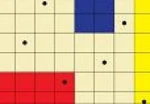A complete preprint of the book
- Josef Dick and Friedrich Pillichshammer, Digital Nets and Sequences. Discrepancy Theory and Quasi-Monte Carlo Integration. Cambridge University Press, Cambridge, 2010. © Cambridge University Press.
is now available here. The final published version can be obtained directly from Cambridge University Press here.
The preprint version differs of course from the final version, for instance, the page numbers are different. However, the numbering of Chapters, Sections, Theorems, Lemmas, Corollaries, Definitions and Examples is the same in both versions. The list of corrections is for the published version. We do not have a separate list for the preprint version (though the corrections for the published version also apply to the preprint version).


